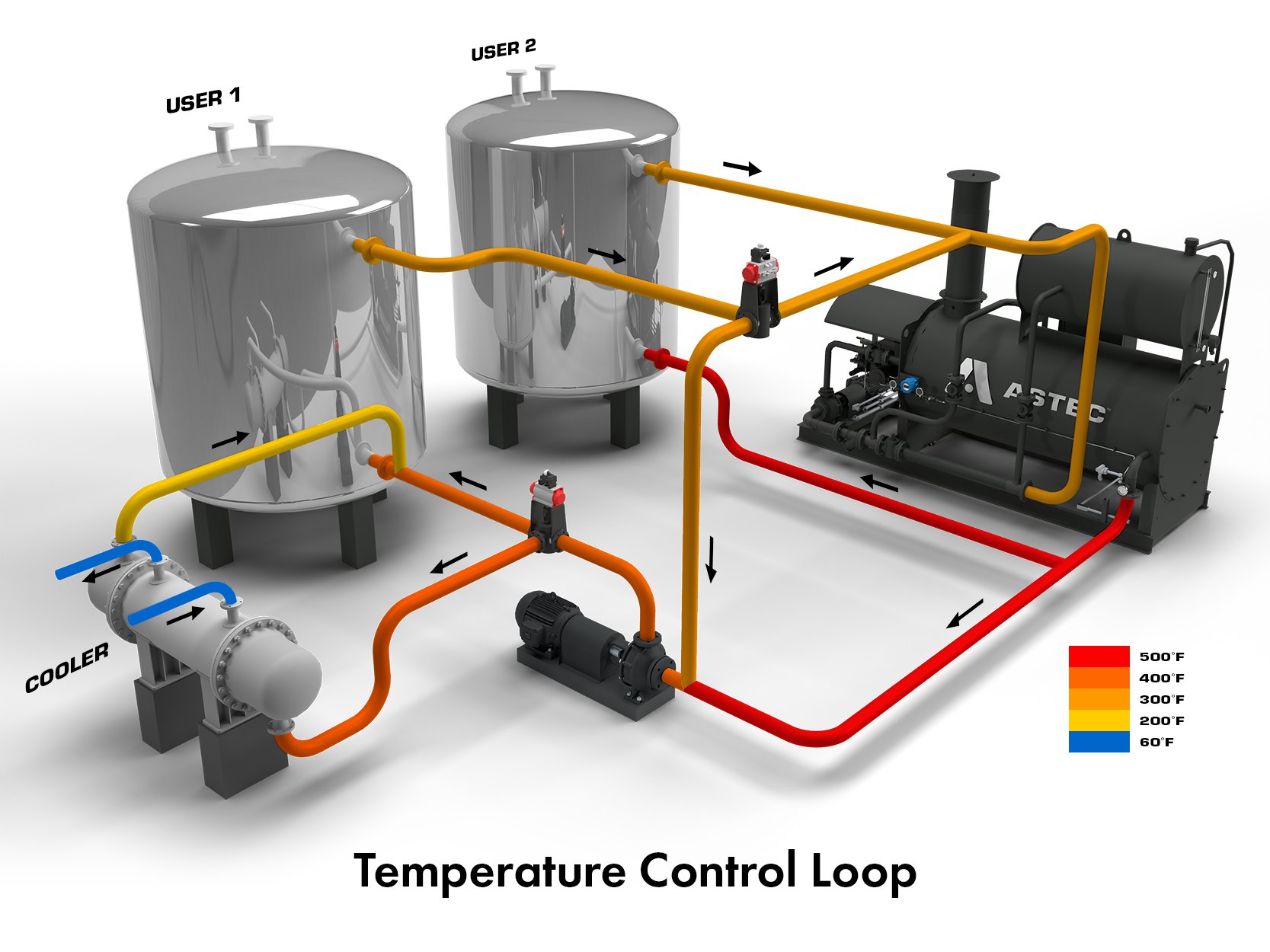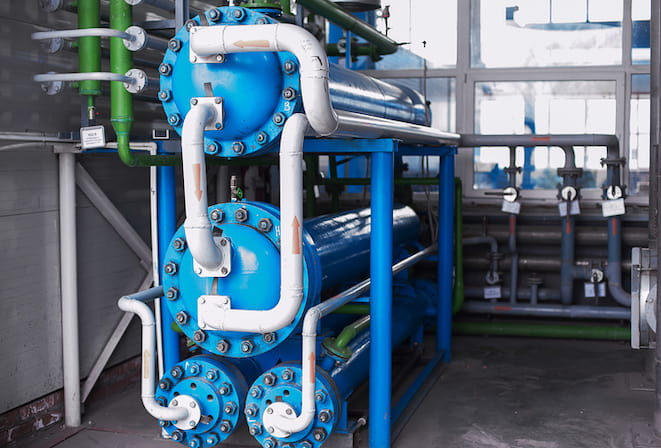Can DVS Heat Transfer Systems Built for High-Performance Electronics Cooling?
Wiki Article
Developments in Heat Transfer Solutions: What You Need to Know for Optimum Efficiency
Innovations in Heat transfer systems are changing efficiency across numerous sectors. Advanced materials like graphene and nanofluids guarantee considerable enhancements in thermal conductivity. At the same time, the integration of IoT and equipment learning provides possibilities for real-time surveillance and boosted power effectiveness. Nonetheless, the landscape of thermal monitoring is rapidly evolving (DVS Heat Transfer Systems). Recognizing these developments is vital for attaining optimal system performance and sustainability in the future. What details advancements are shaping this change?Arising Materials for Enhanced Heat Transfer

Advanced Heat Exchanger Layouts
While typical Heat exchangers have actually served their objective in different applications, advanced styles are now emerging to meet the enhancing needs for performance and efficiency. These ingenious styles, such as plate, shell-and-tube, and finned-tube Heat exchangers, incorporate improved area and boosted flow patterns to increase thermal transfer prices. On top of that, small styles enable for minimized space demands without endangering efficiency. Advanced materials, such as composites and corrosion-resistant alloys, additionally enhance resilience and performance under severe problems. Moreover, simulation technologies and computational liquid dynamics are significantly used to refine these designs, making certain peak Heat transfer attributes. As markets seek to reduce energy intake and make best use of result, the adoption of advanced Heat exchanger layouts is pivotal in attaining these goals.The Role of Nanotechnology in Heat Transfer
Nanotechnology plays a vital duty in boosting thermal conductivity within Heat transfer systems. By controling products at the nanoscale, researchers have actually accomplished significant renovations in energy efficiency. These improvements not only enhance efficiency however also add to more sustainable power options.Enhanced Thermal Conductivity
Significant improvements in thermal conductivity have actually arised through the application of nanotechnology, changing Heat transfer systems across numerous industries. By integrating nanoparticles into Heat transfer liquids and products, scientists have attained impressive rises in thermal conductivity. These nanoparticles, such as carbon nanotubes, graphene, and metal oxides, enhance the Heat transfer residential or commercial properties due to their high surface area and distinct thermal qualities. The resulting compounds display boosted performance in applications ranging from electronics cooling down systems to renewable resource modern technologies. In addition, the ability to customize the dimension, form, and structure of nanoparticles permits for maximized thermal monitoring remedies. Consequently, nanotechnology proceeds to play a crucial duty in the advancement of extra efficient and effective Heat transfer systems, leading the way for improved commercial applications.
Energy Performance Improvements

Combination of IoT in Heat Transfer Systems
The assimilation of IoT in Heat transfer systems introduces the implementation of clever sensors that enhance operational effectiveness. These sensors allow real-time information monitoring, enabling instant changes and optimizations. This technical improvement has the potential to significantly enhance efficiency and power monitoring in Heat transfer applications.Smart Sensors Execution
As Heat transfer systems develop, the assimilation of clever sensors through the Internet of Things (IoT) has become a transformative method. These sensors make it possible for real-time monitoring of temperature level, flow, and stress prices, boosting system efficiency and integrity. By accumulating and transferring data, they facilitate positive upkeep, reducing the danger of system failings. Additionally, clever sensing units contribute to power cost savings by refining functional specifications based upon ecological conditions. Their capacity to analyze abnormalities and fads enables educated decision-making, ensuring peak performance of Heat transfer systems. As sectors significantly adopt this technology, the implementation of clever sensing units stands to reinvent exactly how Heat transfer systems are managed, paving the means for better sustainability and enhanced efficiency outcomes.Real-Time Information Monitoring
How can real-time data checking enhance the efficiency of Heat transfer systems? By integrating Internet of Points (IoT) innovation, Heat transfer systems can utilize continuous data collection from wise sensors. This real-time monitoring permits immediate analysis of temperature level, circulation, and pressure prices, allowing operators to determine inadequacies immediately. As a result, adjustments can be made to maximize efficiency, lower power usage, and expand tools life-span. Furthermore, predictive upkeep can be implemented, minimizing unforeseen downtime and pricey fixings. The ability to visualize efficiency metrics through dashboards enhances decision-making, promoting a proactive method to system administration. Ultimately, real-time information keeping an eye on not only boosts operational efficiency yet additionally adds to sustainability goals within industrial procedures.Energy Efficiency and Sustainability Trends
Energy performance and sustainability patterns are reshaping the landscape of Heat transfer systems, driving technology and compliance throughout different industries. Organizations are progressively focusing on energy-efficient styles to reduce functional expenses and minimize ecological effects. The integration of renewable resource resources is becoming extra prevalent, allowing Heat transfer systems to run sustainably while fulfilling governing needs. In addition, innovations in products and modern technologies promote reduced energy consumption and enhance total efficiency. Lifecycle assessments are also obtaining grip, enabling companies to evaluate the ecological influence of Heat transfer systems from production to disposal. This concentrate on sustainability not only sustains corporate responsibility yet likewise positions companies competitively in a market where consumers increasingly prefer environmentally friendly solutions. Subsequently, power efficiency and sustainability continue to be essential factors to consider for future advancements in Heat transfer modern technology.Developments in Thermal Monitoring Solutions
While the demand for efficient Heat transfer continues to increase, innovations in thermal monitoring services are arising to deal with both efficiency and sustainability difficulties. Advanced products, such as stage adjustment materials and nanofluids, are being created to improve Heat transfer efficiency - DVS Heat Transfer Systems. These products improve thermal conductivity and permit far better temperature guideline in various applications. Furthermore, technologies like active thermal control systems are acquiring traction, allowing real-time modifications to take care of Heat flow properly. These systems contribute to power savings and minimize the ecological impact of thermal procedures. In addition, the assimilation of IoT in thermal management helps with monitoring and anticipating upkeep, ensuring enhanced performance and durability of Heat transfer systems. On the whole, these innovations represent significant strides toward more sustainable thermal administration methodsFuture Instructions in Heat Transfer Technology
Arising improvements in thermal management options signify a promising future for Heat transfer innovation. Researchers are increasingly concentrating on developing products with premium thermal conductivity and boosted power performance. Advancements such as nanofluids, which include suspended nanoparticles, provide substantial enhancements in Heat transfer performance. Additionally, the integration of wise products that adapt to varying temperature level problems is acquiring traction, enabling for more receptive and reliable systems. The increase of additive manufacturing methods is additionally enabling the style of intricate Heat exchanger geometries that enhance fluid flow. Furthermore, the application of artificial intelligence algorithms is expected to transform the optimization of Heat transfer systems, helping with predictive upkeep and performance improvement. Jointly, these advancements are poised to change the landscape of Heat transfer modern technologies in numerous industries.
Often Asked Concerns

Just how Do I Select the Right Heat Transfer System for My Application?
Picking the best Heat transfer system involves evaluating application needs, including temperature ranges, fluid properties, and performance requirements. Assessing system types, maintenance considerations, and cost-effectiveness likewise plays a necessary function in making an informed decision.What Are the Upkeep Requirements for Advanced Heat Exchangers?
Upkeep needs for advanced Heat exchangers generally consist of normal examinations, keeping track of for leakages, cleansing of surfaces, and guaranteeing ideal flow prices. Complying with producer standards assurances efficient operation and lengthens the devices's life expectancy.
Exactly How Do Environmental Factors Impact Heat Transfer Effectiveness?
Ecological aspects considerably affect Heat transfer effectiveness. Variations in air flow, temperature level, and moisture impact thermal conductivity and convective Heat transfer, ultimately impacting system efficiency and requiring factor to consider during the design and operation of Heat transfer systems.What Security Standards Apply to Heat Transfer Systems?
Safety and security requirements for Heat transfer systems normally consist of standards from organizations such as ASME and ASTM. DVS Heat Transfer Systems. These criteria address materials, style, and operational techniques to ensure integrity, efficiency, and protection against risks in various applications
Just How Can I Repair Common Heat Transfer System Issues?
Troubleshooting common Heat transfer system concerns includes looking for leakages, guaranteeing proper fluid flow, examining insulation honesty, and confirming temperature differentials. Identifying these variables can help maintain system effectiveness and avoid more problems.Nanotechnology plays an essential role in enhancing thermal conductivity within Heat transfer systems. Significant innovations in thermal conductivity have actually emerged with the application of nanotechnology, revolutionizing Heat transfer systems across different industries. Improvements in thermal conductivity through nanotechnology have led the method for impressive improvements in energy performance within Heat transfer systems. Power effectiveness and sustainability fads are improving the landscape of Heat transfer systems, driving advancement and conformity DVS Heat Transfer Systems across various industries. The integration of IoT in thermal management helps with surveillance and predictive maintenance, guaranteeing maximized efficiency and durability of Heat transfer systems.
Report this wiki page